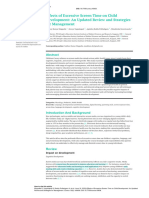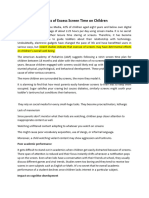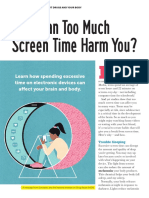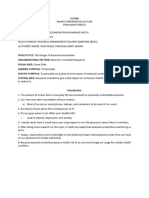0% found this document useful (0 votes)
17 views2 pagesScreen Time Alternatives To Support Development in Kids - 2
Excessive screen time negatively affects sleep, physical health, and mental well-being in individuals of all ages, particularly in children. Common issues include back pain, eye strain, and 'text neck syndrome,' which can worsen anxiety and depression. It is crucial for parents and educators to prioritize non-screen activities to support healthy development and learning in young children.
Uploaded by
tutuianu.catalinCopyright
© © All Rights Reserved
We take content rights seriously. If you suspect this is your content, claim it here.
Available Formats
Download as PDF, TXT or read online on Scribd
0% found this document useful (0 votes)
17 views2 pagesScreen Time Alternatives To Support Development in Kids - 2
Excessive screen time negatively affects sleep, physical health, and mental well-being in individuals of all ages, particularly in children. Common issues include back pain, eye strain, and 'text neck syndrome,' which can worsen anxiety and depression. It is crucial for parents and educators to prioritize non-screen activities to support healthy development and learning in young children.
Uploaded by
tutuianu.catalinCopyright
© © All Rights Reserved
We take content rights seriously. If you suspect this is your content, claim it here.
Available Formats
Download as PDF, TXT or read online on Scribd
/ 2









































































